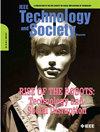The “Novelty Imperative” and Its Discontents
IF 1.9
4区 工程技术
Q3 ENGINEERING, ELECTRICAL & ELECTRONIC
引用次数: 0
Abstract
This essay examines the proposition that the pursuit of novelty is a primary and independent causal factor in technological change. By examining the role of novelty historically, both internally within engineered artifacts and externally, in the built world that humans inhabit, the author argues that when the pursuit of novelty merges with a resurgence in previously discarded or outdated tools and processes, it can challenge and even overturn common assumptions about technological change. These assumptions—that innovation progresses in a linear fashion and newer technologies are inherently superior, more advanced, desirable, powerful, or transformative—may be disrupted, complicated, or entirely undermined by the “novelty imperative.” The hunger for novelty, whether arising from the individual or collective psyches of society, is a persistent object of fascination and study for economists and historians of technological change. This essay draws on the rich example of the revival among classical musicians of so-called “authentic instruments” over the past 50 years and, in particular, the renewed enthusiasm for the fortepiano, which was supplanted by the modern piano about 200 years ago and is today providing a means of achieving novel expressions of technologically mediated music that clearly appeals to listeners and performers. The example of the fortepiano (and early instruments generally) enriches our understanding of the appeal of novel innovations, both from the standpoint of creators of tools and their consumers and in historical and contemporary settings.“新奇势在必行”及其不满
本文考察了追求新颖性是技术变革的主要和独立的因果因素这一命题。通过研究历史上新颖性的作用,无论是在工程人工制品内部还是外部,在人类居住的建筑世界中,作者认为,当对新颖性的追求与以前丢弃或过时的工具和过程的复兴结合在一起时,它可以挑战甚至推翻关于技术变革的普遍假设。这些假设——创新是以线性方式进行的,新技术本质上更优越、更先进、更可取、更强大或更具变革性——可能会被“新颖性要求”打破、复杂化或完全破坏。对新奇事物的渴望,无论是源于社会的个人心理还是集体心理,一直是经济学家和技术变革历史学家着迷和研究的对象。在过去的50年里,古典音乐家对所谓的“正宗乐器”的复兴,特别是对古钢琴的重新热情,这篇文章借鉴了丰富的例子,古钢琴在大约200年前被现代钢琴所取代,今天提供了一种实现技术媒介音乐的新颖表达的手段,显然吸引了听众和表演者。无论是从工具的创造者和他们的消费者的角度,还是从历史和当代的背景来看,古钢琴(以及一般的早期乐器)的例子丰富了我们对新颖创新吸引力的理解。
本文章由计算机程序翻译,如有差异,请以英文原文为准。
求助全文
约1分钟内获得全文
求助全文
来源期刊

IEEE Technology and Society Magazine
工程技术-工程:电子与电气
CiteScore
3.00
自引率
13.60%
发文量
72
审稿时长
>12 weeks
期刊介绍:
IEEE Technology and Society Magazine invites feature articles (refereed), special articles, and commentaries on topics within the scope of the IEEE Society on Social Implications of Technology, in the broad areas of social implications of electrotechnology, history of electrotechnology, and engineering ethics.
 求助内容:
求助内容: 应助结果提醒方式:
应助结果提醒方式:


